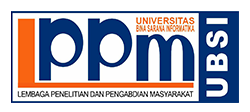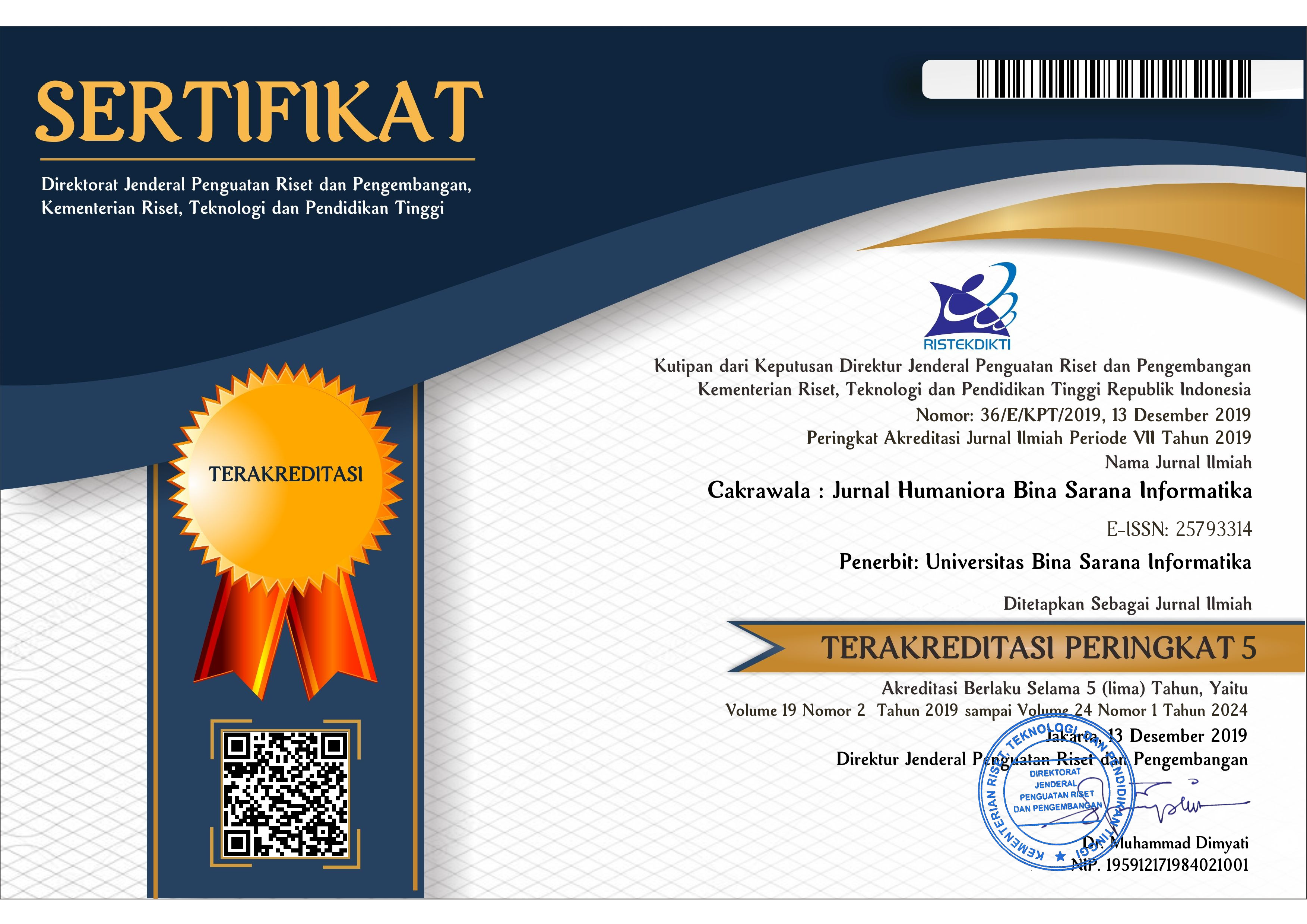Pengaruh Pemberian Insentif Terhadap Prestasi Kerja Karyawan Pada PT Wahyu Promo Citra Jakarta
Abstract
Full Text:
PDFReferences
Birtha, Arifudzaki; Soemantri, Maman; Abdian, F. (2010). Aplikasi Sistem Informasi Persediaan Barang pada Perusahaan Export Hasil Laut Berbasis Web. Transmisi, 12(1), 1.
Flippo, E. B. (2013). Personel Management (Manajemen Personalia), Edisi. VIIJilid II, Terjemahan Alponso S. Jakarta: Erlangga.
Han, J., & Kamber, M. (2006). Data Mining: Concepts and Techniques. In Soft Computing (Vol. 54). https://doi.org/10.1007/978-3-642-19721-5
Hasibuan, M. S. (2013). Manajemen Sumber Daya Manusia. Jakarta: PT Bumi Aksara.
Liza, Y., & Yupinti. (2012). Sistem Informasi persediaan barang pada PT.Surya Nusa Bhaktindo Bengkulu. Media Infotama, 8(1), 90–117.
Mangkunegara, A. P. (2011). Manajemen Sumber Daya Manusia Perusahaan. Edisi Kesepuluh. Bandung: PT. Remaja Rosdakarya.
Marcoulides, G. a. (2005). Discovering Knowledge in Data: an Introduction to Data Mining:Discovering Knowledge in Data: An Introduction to Data Mining. In Journal of the American Statistical Association (Vol. 100). https://doi.org/10.1198/jasa.2005.s61
Oktiyani, R. & K. N. (2016). Analisis Pengaruh Kompensasi Dan Lingkungan Kerja Terhadap Kinerja Guru Di Sma Negeri 1 Klaten. Ecodemica, 4(2), 136–145. https://doi.org/10.31311/jeco.v4i2.445
Sihombing, S. dkk. (2015). Manajemen Sumber Daya Manusia Edisi Revisi. Jakarta: IN MEDIA dengan STMT Trisakti.
Sunyoto, D. (2013). Manajemen Sumber Daya Manusia. Jakarta: Center forAcademic Publishing Service.
Sutrisno, E. (2011). Manajemen Sumber Daya Manusia. Jakarta: Kencana Prenada Media Group.
Sutrisno, E. (2013). Manajemen Sumber Daya Manusia. Jakarta: Kencana Prenada Media Group.
Zainal, V. R. dkk. (2015). Manajemen Sumber Daya Manusia Untuk Perusahaan dari Teori ke Praktik. Jakarta: Rajawali Pers
DOI: https://doi.org/10.31294/jc.v19i2.5912
ISSN: 2579-3314












